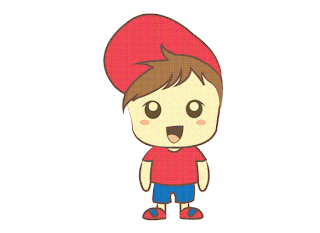So, I started a new file from scratch and here it is!
Because this is a humanoid character, I've asked Mr.Kim on how to properly animate Adrian. He said that I need to add the spines for him and that will take some time, so he said he'll show me how to do it. And for the eyes, I left that part because I wasn't sure how am I gonna animate it to blink if I build the sockets (based on the tutorial video I watched). Mr.Kim said that since this is a stylized character, I don't need to make the eye sockets, but put a button-shaped polygon for it.
So once we get the spines done, we can animate it with the other objects and hopefully, completed in time! :D Amirah is still animating the letter 'Adrian' and 'Aeroplane' and that would be it for letter 'A'!


































